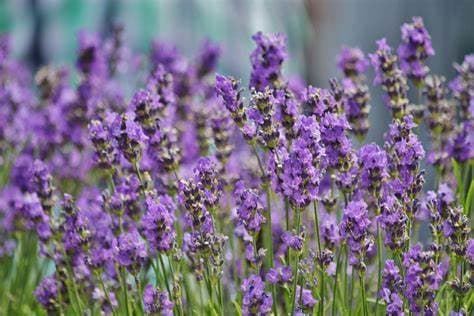Lavender: Know some important information before cultivation

Lavender is an evergreen plant. It is cultivated to obtain fresh flowers as well as to obtain oil. Lavender also has many medicinal properties. Soaps, perfumes, and many other cosmetics are also prepared from its oil. Apart from this, tea and many other food items are also prepared from it.
Lavender plants grow 2 to 3 feet tall. Its flowers are blue and purple. Its cultivation can prove to be a profitable deal for the farmers. Let us get some important information related to lavender cultivation.
Lavender cultivation time
-
The month of November-December is suitable for preparing its nursery.
The right way to grow lavender
-
It is cultivated by sowing seeds as well as transplanting the cuttings of plants.
-
However, more than sowing of seeds, it is cultivated by planting cuttings of plants.
-
Select plants that are 1 or 2 years old for cuttings.
Suitable soil and climate
-
It should be cultivated in soil rich in organic matter.
-
Plants have higher oil content when cultivated in lightly alkaline soils.
-
pH of soil The level should be between 7 and 8.
-
Cool weather is required for better growth of plants.
-
Lavender plants cannot tolerate extreme heat.
-
Excessive rainfall is also harmful to the plants.
-
12 to 15 degree centigrade temperature is required for the germination of seeds.
-
The temperature should be 20 to 22 degree centigrade for the growth of plants.
-
Lavender plants can tolerate minimum temperature of 10 degree centigrade and maximum 25 to 30 degree centigrade.
Field preparation and planting
-
First, do deep plowing once in the field and leave it open for a few days.
-
After that mix well decomposed cow dung in the field and irrigate.
-
After a few days of irrigation, when the top layer of soil starts drying, then light tillage should be done in the field.
-
After plowing, apply a pat to make the soil flat and friable.
-
Prepare bunds in the field for transplanting plants.
-
Keep a distance of about 1 meter between all the ridges.
-
Plant the seedlings at a distance of 25 to 30 cm.
Irrigation and Weed Control
-
The plants do not require much irrigation.
-
Apply light irrigation immediately after transplanting.
-
Irrigate as per requirement to maintain the moisture content in the soil.
-
Do not allow water logging in the field.
-
To control weeds, do light weeding and hoeing about 20 days after transplanting.
-
Do the second weeding after about 20 to 30 days after the first weeding.
-
Weeding should be done even after harvesting the plants.
cutting of plants
-
Harvest the plants after 50 percent flowering of the plants.
-
Harvest the plants at a height of a few centimeters above the ground surface.
-
The length of the branches cut along with the flower should be at least 12 cm.
-
Apart from selling fresh flowers, dried flowers can also be sold.
-
Apart from this, there is a lot of demand for lavender oil in the market.
Read also:
-
Get information related to Gaillardia cultivation from here.
We hope this information will prove to be important for you. If you liked the diga information in this post, then like our post and also share it with other farmers. So that more and more farmer friends can take advantage of this information and cultivate lavender. Ask us your questions related to this through comments.
Please login to continue

Get free advice from a crop doctor
